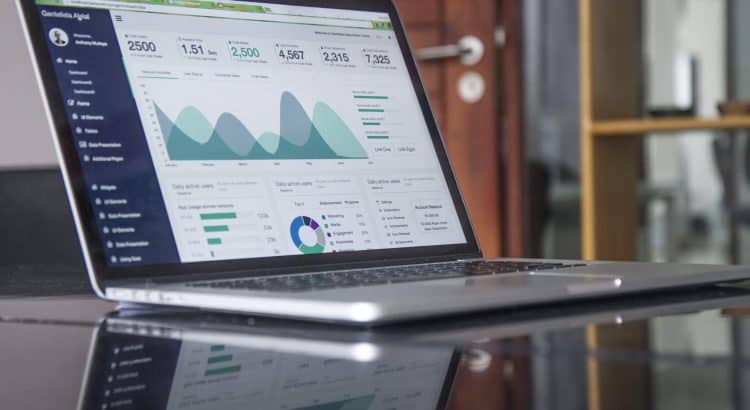It’s no secret that technology has changed the marketing landscape. In fact, it’s hard to overestimate just how much of an impact technology has had on marketing over the past few years. This post will show how technology has revolutionized marketing and what it means for marketers moving forward
Read MoreTag: data
How to Protect Your Website Against Data Theft
Despite the financial crises many companies are facing today due to the spread of COVID-19, it seems that hackers have no intention of giving business owners a break. Statistics show that 30,000 websites get hacked per day. The scarier part is that according to experts, 60% of small businesses are at risk of shutting down six months after they get hacked.

How Reliable Is Social Media Data?
Social media has proven itself as a major source of valuable data for companies. Every post or comment made by users reflects a certain impression of what they normally do, like, or think about. From specific individual behavior to a more collective one, one can find some regularity that can be used to generate consumer intelligence worthy of a company’s attention.
Read More
What is Blockchain?
A blockchain is a continuously growing list of records, called blocks, which are linked and secured using cryptography
Each block contains typically a hash pointer as a link to a previous block, a timestamp and transaction data. By design, blockchains are inherently resistant to modification of the data. Functionally, a blockchain can serve as an open, distributed ledger that can record transactions between two parties efficiently and in a verifiable and permanent way. For use as a distributed ledger a blockchain is typically managed by a peer-to-peer network collectively adhering to a protocol for validating new blocks. Once recorded, the data in any given block cannot be altered retroactively without the alteration of all subsequent blocks and a collusion of the network majority.
Blockchains are secure by design and are an example of a distributed computing system with high Byzantine fault tolerance. Decentralized consensus has therefore been achieved with a blockchain. This makes blockchains potentially suitable for the recording of events, medical records, and other records management activities, such as identity management, transaction processing, documenting provenance, or food traceability.
The first distributed blockchain was conceptualised by Satoshi Nakamoto in 2008 and implemented the following year as a core component of the digital currency bitcoin, where it serves as the public ledger for all transactions. The invention of the blockchain for bitcoin made it the first digital currency to solve the double spending problem, without the use of a trusted authority or central server. The bitcoin design has been the inspiration for other applications.
Source: Wikipedia
What does GDPR mean?
GDPR means General Data Protection Regulation
The new European Data protection legislation (or, as it is called in the Netherlands, the general regulation on data security, AVG), will be in effect from 2018, which affects all organisations working with sensitive data. The law has been developed because the EU wants to create a clear and secure digital environment. The idea is to protect the citizens against data loss and theft by forcing the organization that processes this data to handle it cautiously. Read More
What does DINL mean?
DINL means digital infrastructure Netherlands
The Stichting DINL is a spokeswoman for the Dutch digital infrastructure sector. The foundation originates from a collaboration between AMS-IX, DHPA, ISPConnect, NLnet, SIDN and SURFnet. With a turnover of approximately 1.2 billion euros and an employment of approximately 20,000 jobs, the sector is a driving force for Dutch economic growth. DI Read More
What is WHATSAPP?
WHATSAPP is an application for smartphones
WHATSAPP is a messaging service, a chat program for mobile phones actually. This allows you to start conversations with other users, you can also send pictures or movies back and forth. The program has become popular because it is used as an alternative to SMS. Read More
What does DPI mean?
DPI means Deep Packet Inspection
At DPI, content is looked at the data transmitted over the network. If you send an old-fashioned handwritten letter, the postal company only looks at the envelope to see where it should go, if DPI is used, the letter itself will be read. A virus scanner and a Firewall also make Gebrbuik of DPI to check what happened on the computer or on the network. Read More
What does FUP mean?
FUP means Fair Use Policy
A FUP often applies when using an Internet connection. You may download it, but it should not be done constantly so that other users are bothered by it: it is therefore not allowed to be extremely much data user. What happens when the FUP is violated varies by contract, it may be that no data traffic is possible at all, or that an additional account is coming. Because Fair Use is rather opaque, you don't know as a user when you are violating it.
What does NAS mean?
NAS means Network attached Storage
A NAS is a small computer with a lot of storage capacity, you can see it as a large hard disk connected to a network. For example, a normal external hard disk is connected to a computer via a USB connection and not to a network. The NAS uses TCP/IP to control the data transfer. Read More